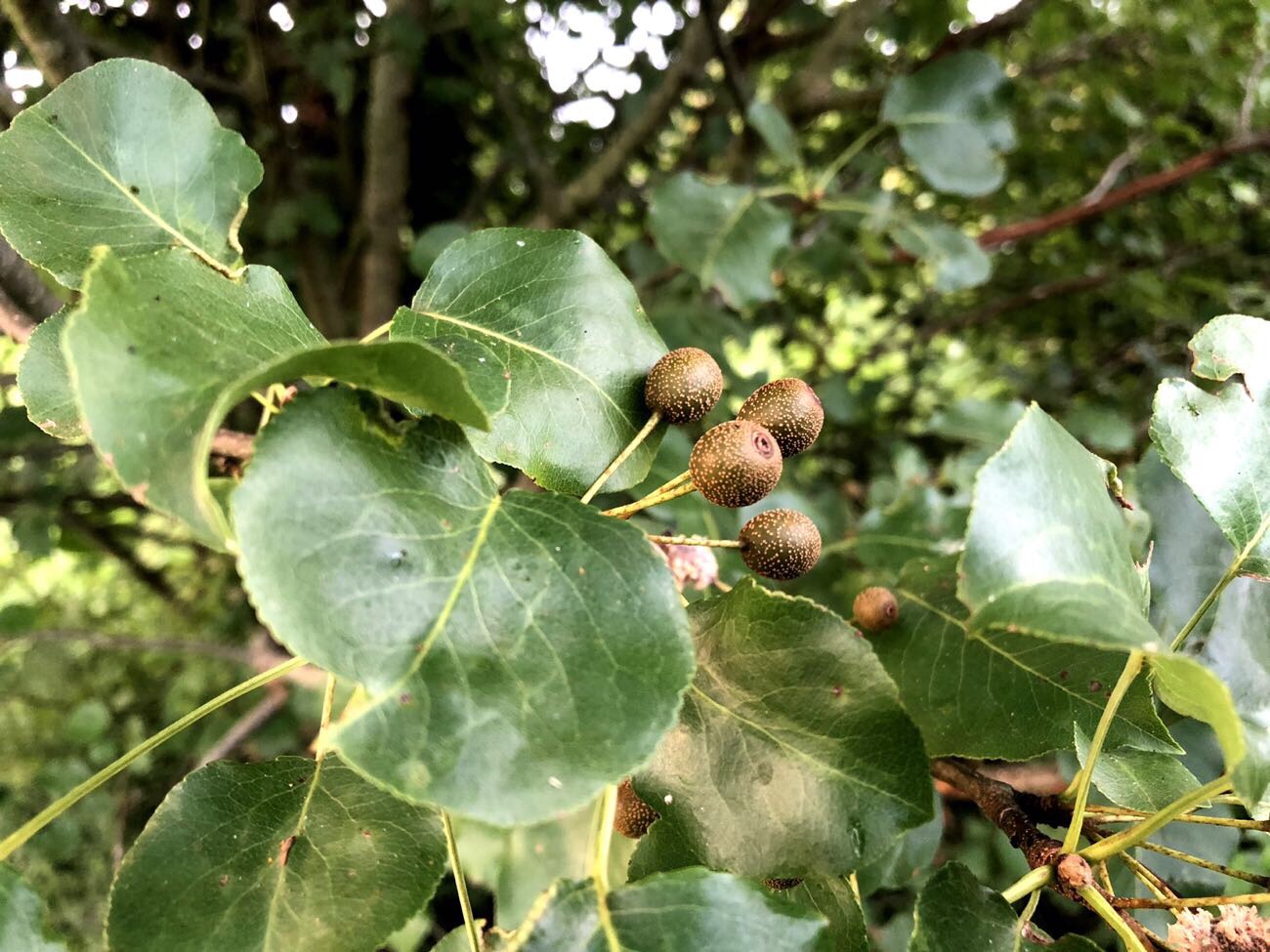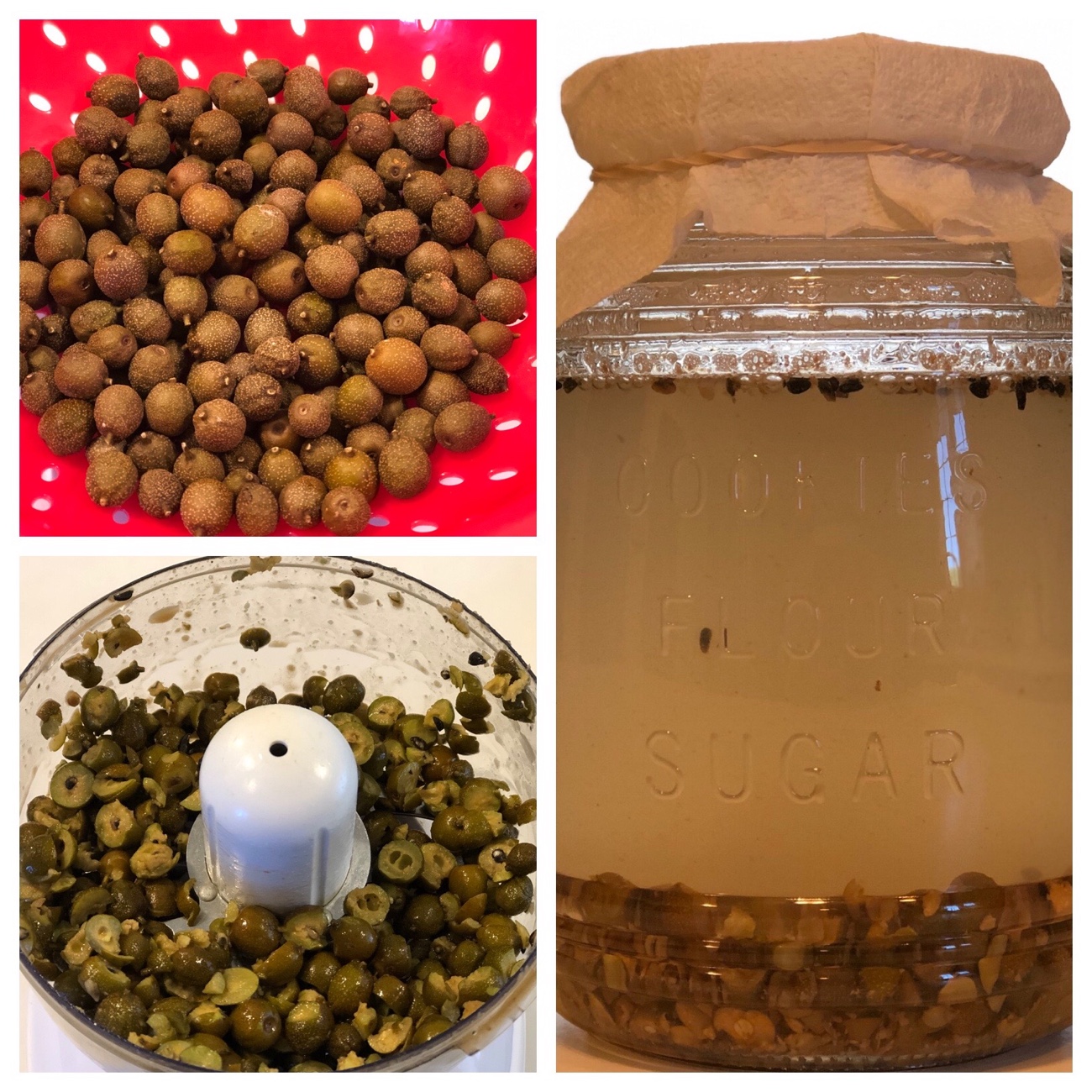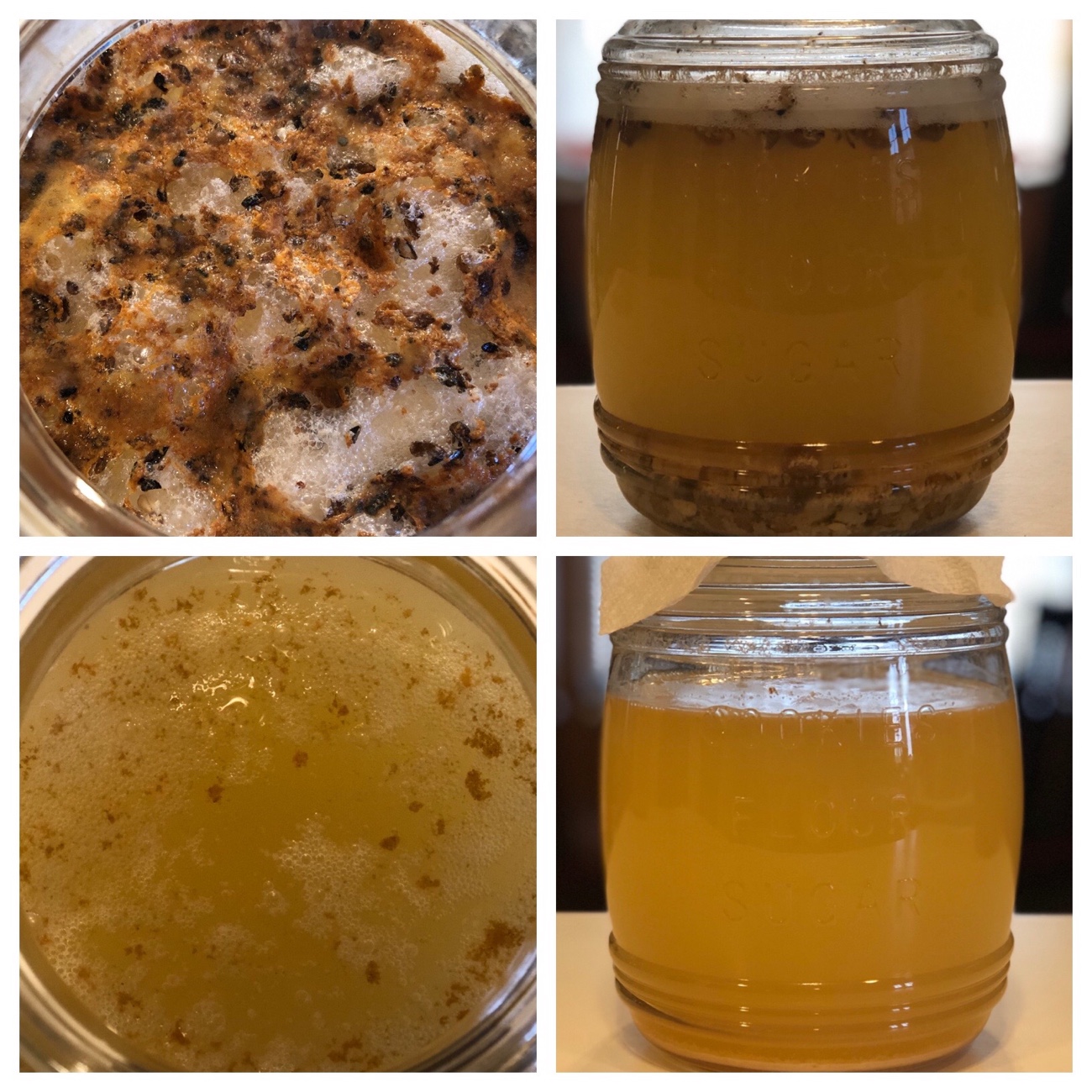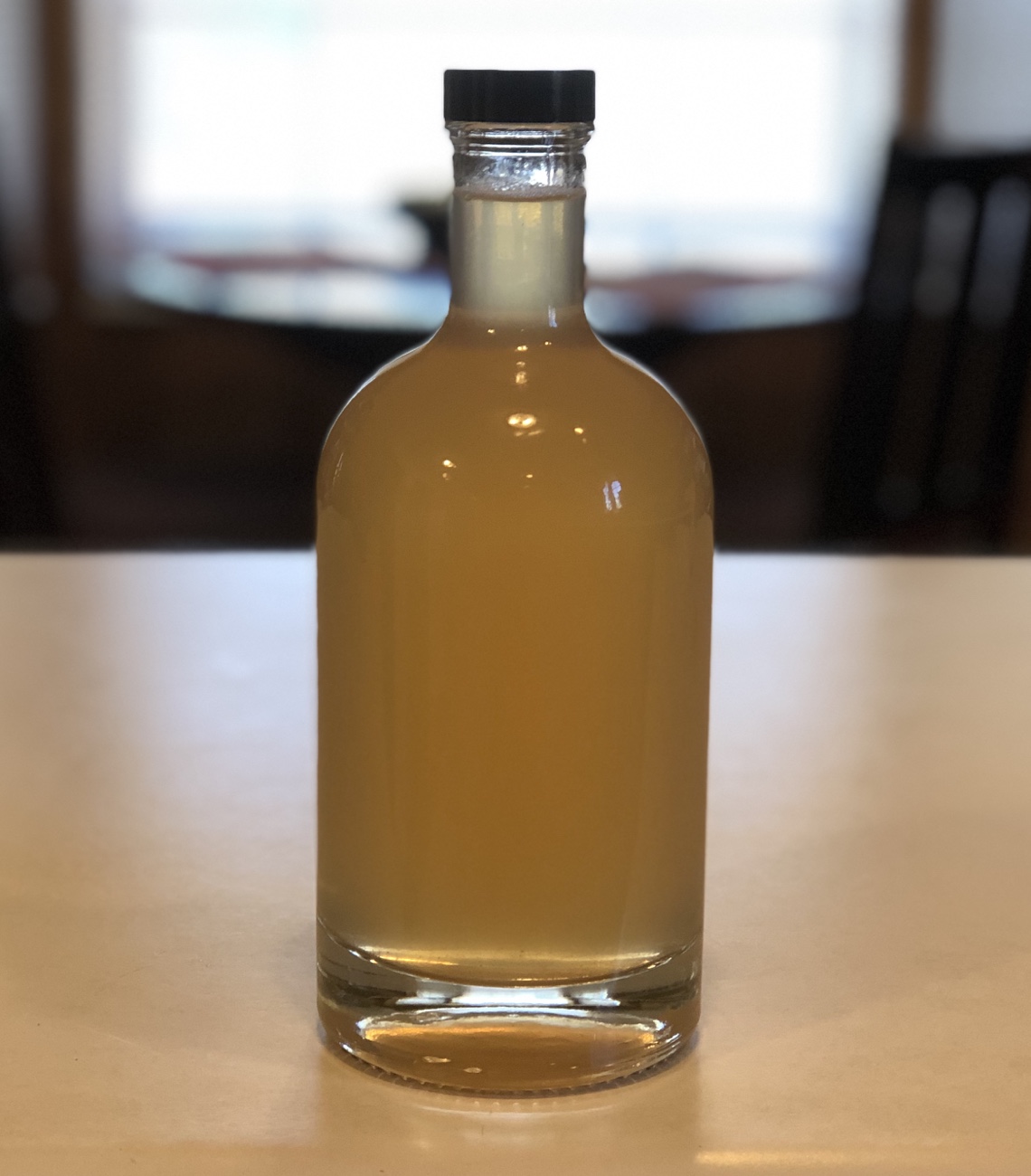
A couple of months ago, I discovered that a tree in the pig pasture had tiny fruit on it. Yes, the fruit was only about the size of grapes, rock hard, and sour to boot, but I had to look the tree up to find out if the fruit was edible…and, indeed, it was!
Bradford Pear trees are mainly considered ornamental and invasive (with some areas even going as far as to offer a bounty on the trees) so I wouldn’t, personally, have planted any on my property, but here it was, fruiting as best it could, and just asking to be utilized. Well, I was the right person for the job!
Before I could determine how to use it, though, I needed to sample it. The tiny fruits were woody and, when bitten into, very sour. Fortunately, I like sour…and I also like vinegar, so this seemed like the perfect match.
After collecting many – and I didn’t count them – miniscule pears, I decided to grind them in a food processor to expose more of the fruit to the culturing medium. The pear purée was placed in a jar with filtered water and sugar and covered with a breathable cloth.

I stirred the brew daily at first, strained out the solids after a week, then gradually reduced the stirring. The vinegar was bubbly almost immediately, which I would attribute to the wild yeasts on the surface of the pears; even better, the future vinegar smelled like vanilla extract while it fermented.

Today, I strained the finished vinegar into a repurposed glass bottle and sampled it. It’s quite tart (as you’d expect with vinegar, right?) and reminiscent of apple cider vinegar. I think this will be useful in delicate-flavored shrubs or in poultry broths, where a lighter-flavored vinegar would be optimal. I just don’t think you can have too much of the probiotic goodness of raw vinegar – it has so many uses, including for animals. I like to put a little in the waterers of days-old chicks because it helps get their guts in order and resolves (or prevents) issues like pasty butt. Needless to say, we use and consume a lot of raw vinegar around here.

So would I make Bradford Pear vinegar again? Maybe. It was fairly easy to collect the fruit and prepare the vinegar, but there are so many other options for making raw vinegar that I’m not yet convinced that this will be a regular in my vinegar lineup. Regardless, it feels great to use a volunteer tree’s fruit to make something beneficial and useful.
Want to try making this yourself? My approach was loosely based on this recipe.

Comments are closed.